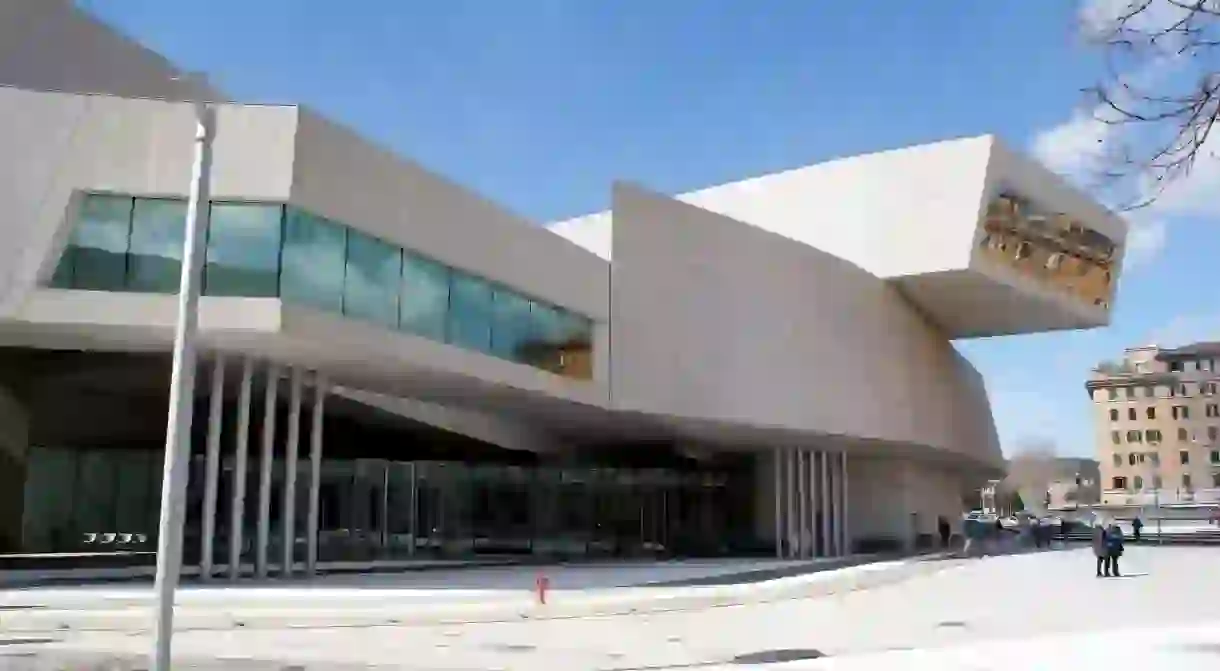MAXXI: Italy's 21st-Century Art Museum

MAXXI, the National Museum of 21st-Century Arts, has become an essential destination on the global art map and a locus for contemporary art and architecture within Rome.
Designed by the late architectural star Zaha Hadid, MAXXI has helped to modernise the city’s landscape, its sharp angles and dynamic curves a bracing contrast to Rome’s collection of ancient structures. Located in the Flaminio neighbourhood of northern Rome, it is just a short tram ride from the city centre and is sure to impress with its pioneering design and experimental exhibitions.
MAXXI was conceived as an experimental space to showcase avant-garde art and innovative architecture through a permanent collection, rotating exhibitions and an invigorating calendar of events. It is a multidisciplinary space that transcends the traditional museum-building paradigm: it hosts everything from conferences and seminars to summer camps, silent discos, film screenings and yoga in the outdoor park. It is a true “culture campus” that aims to promote aesthetic appreciation and cross-disciplinary creativity.
“I see the MAXXI as an immersive urban environment for the exchange of ideas, feeding the cultural vitality of the city.”
Zaha Hadid
Italy’s Cultural Heritage Board proposed the creation of Italy’s first national contemporary art museum in 1998 and commissioned it in 2000. The Iraqi-British architect Zaha Hadid won the design competition, beating out 273 international candidates, and after 10 years of construction, the building was opened to the public in May 2010. The structure is built primarily of concrete and glass, with angles complementing curves and voluminous steel staircases woven throughout the interior.
The museum is comprised of two intersecting institutions, MAXXI Arte and MAXXI Architecture. The permanent collection includes works by, among others, William Kentridge, Anish Kapoor, Gerhard Richter and Ed Ruscha, as well as the archives of established Italian architects such as Carlo Scarpa, Aldo Rossi and Pier Luigi Nervi. The rotating exhibitions are ambitious and have covered a wide range of topics including contemporary urbanism in Istanbul, the unedited history of Iran through art, and architecture’s relationship to global food consumption and distribution.
In 2010, MAXXI received the Stirling Prize, a British award that recognises excellent in architecture.
MAXXI
Via Guido Reni 4, Rome, Italy, +39 06 320 1954
Hours: Tuesday to Sunday 11am-7pm / closed Monday
The permanent collection is free for all from Tuesday to Friday and every first Sunday of the month.













